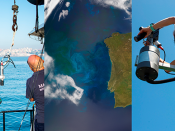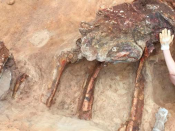Por Nicolas Vandewalle (GRASP, Institute of Physics, University of Liège, B5a, Liège, Belgium).
Self-assembly, an inherently spontaneous process marked by the emergent ordering of systems through thermal agitation and intermolecular interactions, holds a pivotal role in the formation and the aggregation of intricate macromolecules, being highly relevant for chemistry and biology. While ubiquitously observed at the molecular level, its application extends to the mesoscopic scale, wherein capillary-driven self-assembly has been proposed for building structures in the gap between classical bottom-up and top-down fabrication methods, specifically, at spatial scales ranging from 10 micrometers to 1 millimeter. Although this fabrication approach was introduced two decades ago, accomplishments have largely been confined to the realization of regular or simplistic structures. This talk proposes physics principles derived from both experimental and statistical physics to elucidate methodologies for manipulating subtle capillary interactions, thereby facilitating the construction of intricately complex structures. Furthermore, we illustrate how such mesoscopic systems can serve as analogous models for various physical systems, encompassing folding molecules, molecular lock-key mechanisms, and crystallization processes. By harnessing magnetic fields, we introduce the potential to actuate particles towards the self-assembly of micromachines, presenting applications including interface cleaning, particle sorting, and transport functionalities.






















